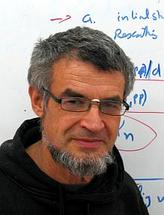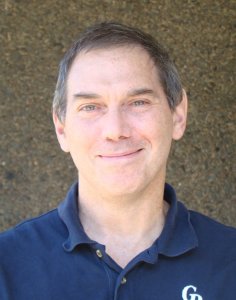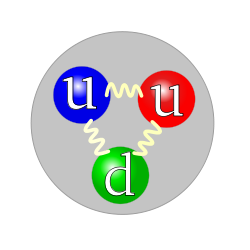
BSF-NSF Partnership Profiles: The Proton Puzzle – One of Our Biggest Mysteries
Profs. Eli Piasetzky and Ronald Gilman Explore one of Science’s Biggest Mysteries
Think of a muse, and often, something or someone inspiring comes to mind. To the Ancient Greeks, for example, muses were women whose power inspired artists to create masterworks.

But to many of today’s scientists, a different kind of muse is attracting plenty of attention. In this case, it’s the Muon Proton Scattering Experiment, better known as MUSE. Participants in this experiment are attempting to shed light on one of science’s biggest mysteries, the Proton Radius Puzzle. In the Standard Model of physics, the theory of the basic particles and interactions in nature, the electron and muon interact with other particles in the same way. But when the two
particles are used to measure the proton size, scientists get different answers.

No one knows why this happens, and since protons are everywhere in the universe, knowing more about them could lead to enormous implications in just about every field of science. Eli Piasetzky, a physics professor at Tel Aviv University, and Ronald Gilman, a physics professor at Rutgers University, are two of the scientists from around the world who are seeking to answer the key question of the proton’s true size, through the MUSE experiment.
Their project involves measuring how beams of muons and electrons are deflected by protons, using the same experimental set-up at the same time, and obtaining a precise comparison of the proton radius as determined by electron and muon scattering. This will allow them to test whether the observed difference results from novel physics beyond what is contained in the Standard Model, or some other effects. The proposed experiment will be carried out using the mixed pion/electron/muon beam line at the Paul Scherrer Institute (PSI) in Switzerland.
Gilman and Piasetsky received a basic BSF grant when they began their association with MUSE. They used it to pay for necessary equipment, such as detector components and custom electronics, to deliver excellent timing to measure beam particle properties.
They now hold a NSF-BSF partnership grant that is helping them share their continuing involvement with their students.

“We have been measuring properties of the electron plus muon beam and prototyping equipment. Now we are building the equipment for the production data,” Gilman said.
Piasetzky considers BSF to be “important to the vitality of science in Israel” and said, “We got the BSF grant a few years before we were ready scientifically to apply and to get the full support for the project. This support came at the very critical starting point, when it (MUSE) was considered high-risk,” Piasetzky said. “This allowed us to perform necessary steps to get to the level where we could apply for and get full support for the project.”
Now that they have received a grant through the NSF-BSF partnership, they can make travel plans for themselves and their research students to travel to Switzerland and take part in MUSE.
Gilman believes that as MUSE progresses, it could lead to, “interesting new science, perhaps new subatomic particles not yet known. It would be a significant scientific finding if we find that the muon and electron interact differently with the proton. It would contradict our basic understanding of nature that is reflected in the Standard Model of particle physics.”

Gilman and Piasetzky are eager to be part of this discovery, which meshes perfectly with their curious natures. For as long as he can remember, Piasetzky has wanted to know how things are built and why they work.
“I think I’m still trying to do that today,” he said.
As for Gilman, he still considers science to be “fun.” “You can to play with the universe and learn things no one ever knew before,” he said.
Through MUSE, and with the assistance of BSF and the NSF, Gilman and Piasetsky are attempting to do just that.
